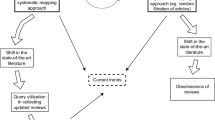Abstract
In the last two decades, artificial intelligence (AI) and machine learning (ML) have grown tremendously. However, understanding and assessing the impacts of causality and statistical paradoxes are still some of the critical challenges in their domains. Currently, these terms are widely discussed within the context of explainable AI (XAI) and algorithmic fairness. However, they are still not in the mainstream AI and ML application development scenarios. In this paper, first, we discuss the impact of Simpson’s paradox on linear trends, i.e., on continuous values, and then we demonstrate its effects via three benchmark training datasets used in ML. Next, we provide an algorithm for detecting Simpson’s paradox. The algorithm has experimented with the three datasets and appears beneficial in detecting the cases of Simpson’s paradox in continuous values. In future, the algorithm can be utilized in designing a certain next-generation platform for fairness in ML.
This work has been partially conducted in the project “ICT programme” which was supported by the European Union through the European Social Fund.
Access this chapter
Tax calculation will be finalised at checkout
Purchases are for personal use only
Similar content being viewed by others
References
Agrawal, R., Srikant, R.: Fast algorithms for mining association rules in large databases. In: Proceedings of VLDB 1994 - the 20th International Conference on Very Large Data Bases, pp. 487–499. Morgan Kaufmann (1994)
Blyth, C.R.: On Simpson’s paradox and the sure-thing principle. J. Am. Stat. Assoc. 67(338), 364–366 (1972)
Cattell, R.B.: P-technique factorization and the determination of individual dynamic structure. J. Clin. Psychol. 8, 5–10 (1952)
Conger, A.J.: A revised definition for suppressor variables: a guide to their identification and interpretation. Educ. Psychol. Meas. 34(1), 35–46 (1974)
Dawid, A.P.: Conditional independence in statistical theory. J. Roy. Stat. Soc. Ser. B (Methodol.) 41(1), 1–15 (1979). https://doi.org/10.1111/j.2517-6161.1979.tb01052.x
Draheim, D.: DEXA 2019 keynote presentation: future perspectives of association rule mining based on partial conditionalization, Linz, Austria, 28th August 2019. https://doi.org/10.13140/RG.2.2.17763.48163
Draheim, D.: Future perspectives of association rule mining based on partial conditionalization. In: Hartmann, S., Küng, J., Chakravarthy, S., Anderst-Kotsis, G., Tjoa, A.M., Khalil, I. (eds.) Proceedings of DEXA’2019 - the 30th International Conference on Database and Expert Systems Applications. LNCS, vol. 11706, p. xvi. Springer, Heidelberg (2019)
Fisher, R.A.: The use of multiple measurement in taxonomic problems. Ann. Eugenics 7(2), 179–188 (1936). https://doi.org/10.1111/j.1469-1809.1936.tb02137.x
Fisher, R.A.: Iii. the influence of rainfall on the yield of wheat at rothamsted. Phil. Trans. Roy. Soc. Lond. Ser. B Containing Papers Biol. Charact. 213(402–410), 89–142 (1925)
Freitas, A.A., McGarry, K.J., Correa, E.S.: Integrating bayesian networks and simpson’s paradox in data mining. In: Texts in Philosophy. College Publications (2007)
Gorman, K.B., Williams, T.D., Fraser, W.R.: Ecological sexual dimorphism and environmental variability within a community of antarctic penguins (genus pygoscelis). PLOS ONE 9(3), 1–14 (2014). https://doi.org/10.1371/journal.pone.0090081
Horst, A.M., Hill, A.P., Gorman, K.B.: palmerpenguins: Palmer Archipelago (Antarctica) penguin data (2020). https://doi.org/10.5281/zenodo.3960218, https://allisonhorst.github.io/palmerpenguins/, r package version 0.1.0
Julia, A., Jeff, L., Surya, M., Lauren, K.: Machine Bias, www.propublica.org/article/machine-bias-risk-assessments-in-criminal-sentencing?token=TiqCeZIj4uLbXl91e3wM2PnmnWbCVOvS
Kaushik, M., Sharma, R., Peious, S.A., Shahin, M., Ben Yahia, S., Draheim, D.: On the potential of numerical association rule mining. In: Dang, T.K., Küng, J., Takizawa, M., Chung, T.M. (eds.) FDSE 2020. CCIS, vol. 1306, pp. 3–20. Springer, Singapore (2020). https://doi.org/10.1007/978-981-33-4370-2_1
Kaushik, M., Sharma, R., Peious, S.A., Shahin, M., Yahia, S.B., Draheim, D.: A systematic assessment of numerical association rule mining methods. SN Comput. Sci. 2(5), 1–13 (2021). https://doi.org/10.1007/s42979-021-00725-2
King, G., Roberts, M.: Ei: a (n r) program for ecological inference. Harvard University (2012)
MacKinnon, D.P., Fairchild, A.J., Fritz, M.S.: Mediation analysis. Ann. Rev. Psychol. 58(1), 593–614 (2007). https://doi.org/10.1146/annurev.psych.58.110405.085542
O’Neil, C.: Weapons of Math Destruction: How Big Data Increases Inequality and Threatens Democracy. Crown Publishing Group, New York (2016)
Pearl, J.: Causal inference without counterfactuals: comment. J. Am. Stat. Assoc. 95(450), 428–431 (2000)
Pearl, J.: Understanding Simpson’s paradox. SSRN Electron. J. 68 (2013). https://doi.org/10.2139/ssrn.2343788
Pearson Karl, L.A., Leslie, B.M.: Genetic (reproductive) selection: inheritance of fertility in man, and of fecundity in thoroughbred racehorses. Phil. Trans. Roy. Soc. Lond. Ser. A 192, 257–330 (1899)
Quinlan, J.: Combining instance-based and model-based learning. In: Machine Learning Proceedings 1993, pp. 236–243. Elsevier (1993). https://doi.org/10.1016/B978-1-55860-307-3.50037-X
Robinson, W.S.: Ecological correlations and the behavior of individuals. Am. Sociol. Rev. 15(3), 351–357 (1950)
Rosenbaum, P.R., Rubin, D.B.: The central role of the propensity score in observational studies for causal effects. Biometrika 70(1), 41–55 (1983)
Sharma, R., Peious, S.A.: Towards unification of decision support technologies: Statistical reasoning, OLAP and association rule mining. https://github.com/rahulgla/unification
Simpson, E.H.: The interpretation of interaction in contingency tables. J. Roy. Stat. Soc. Ser. B (Methodol.) 13(2), 238–241 (1951)
Srikant, R., Agrawal, R.: Mining quantitative association rules in large relational tables. In: Proceedings of the 1996 ACM SIGMOD International Conference on Management of Data, pp. 1–12 (1996)
Tu, Y.K., Gunnell, D., Gilthorpe, M.S.: Simpson’s paradox, lord’s paradox, and suppression effects are the same phenomenon-the reversal paradox. Emerg. Themes Epidemiol. 5(1), 1–9 (2008)
Yule, G.U.: Notes on the theory of association of attributes in statistics. Biometrika 2(2), 121–134 (1903)
Author information
Authors and Affiliations
Corresponding author
Editor information
Editors and Affiliations
Rights and permissions
Copyright information
© 2022 Springer Nature Switzerland AG
About this paper
Cite this paper
Sharma, R. et al. (2022). Detecting Simpson’s Paradox: A Step Towards Fairness in Machine Learning. In: Chiusano, S., et al. New Trends in Database and Information Systems. ADBIS 2022. Communications in Computer and Information Science, vol 1652. Springer, Cham. https://doi.org/10.1007/978-3-031-15743-1_7
Download citation
DOI: https://doi.org/10.1007/978-3-031-15743-1_7
Published:
Publisher Name: Springer, Cham
Print ISBN: 978-3-031-15742-4
Online ISBN: 978-3-031-15743-1
eBook Packages: Computer ScienceComputer Science (R0)




